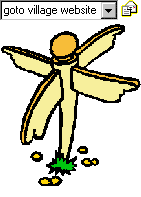
|
The Domesday Survey of 1086The Worlington entry appears under the holdings of Frodo, the Abbot's brother, who also held land in Tuddemhas: "At Worlington Ormer held in King Edward's time There were no free men is Worlington which, at first sight, is a little surprising as Suffolk as a whole was distinguished as having the greatest proportion of free tenants in the whole country. Villeins were unfree tenants who nevertheless had a share in the agricultural system of the manor; bordars were of a lower rank and serfs were almost literally slaves. A carrucate of land was probably about 120 acres but it is unwise to interpret this too literally. A quarentema is another word for a furlong but this had not then been standardised at 220 yards. The domestic refers to the land farmed by the Lord of the Manor. It is difficult to explain why Worlington payed more in gold or tax than Mildenhall which payed only 11¼ d for a much larger manor. Sheep were present in considerable, numbers; this is not surprising as Suffolk later became the main centre of the mediaeval wool trade. Adding the numbers given we find a total of 21+ men. If it is assumed that there were 4 people to the average household~ this would give an approximate population in 1086 of 108. Colin Dring ©1979
|
|
A Forest Heath District Council (Suffolk) Project supported by the Heritage Lottery Fund as part of the Millennium Festival ©2000 Designed by ArtAtac |